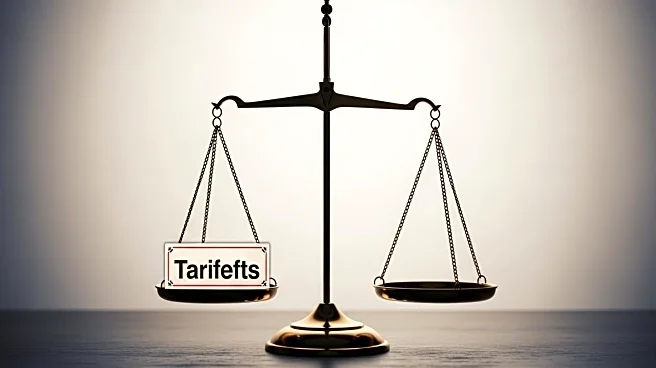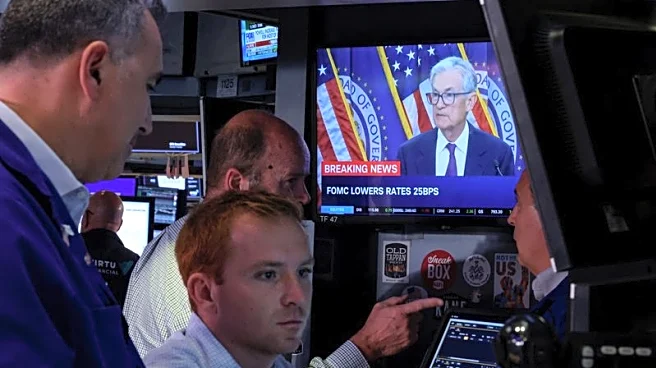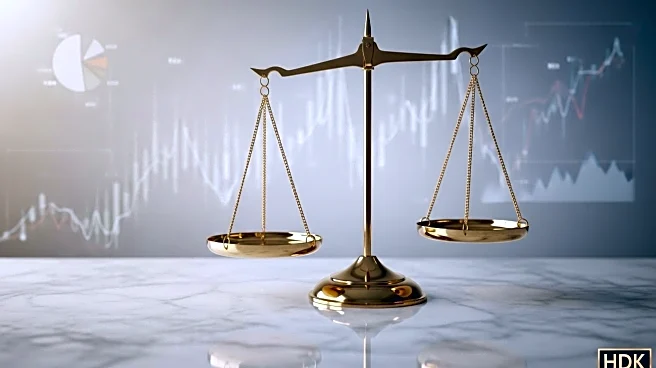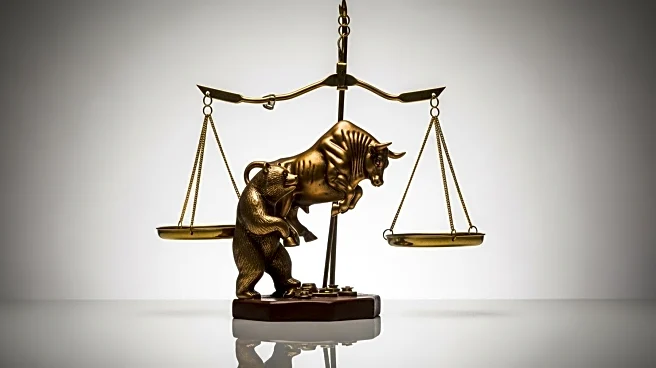What's Happening?
The Federal Reserve recently implemented a quarter percentage point interest rate cut, a decision that was largely supported by the Federal Open Market Committee with an 11 to 1 vote. Despite this apparent consensus, significant internal differences exist regarding future monetary policy directions. The 'dot plot' of individual members' expectations revealed a wide range of opinions on the number of additional rate cuts needed in the coming years, as well as varied forecasts for GDP, inflation, and unemployment. The Summary of Economic Projections indicated that inflation is not expected to reach the Fed's 2% target until 2028, with unemployment rates remaining stable and the economy avoiding recession. These differences, although minor in numerical terms, could have substantial impacts given the current economic climate characterized by a weakening labor market and persistent inflation.
Why It's Important?
The Federal Reserve's decision to cut interest rates and the internal divisions it revealed are significant for several reasons. Firstly, the rate cut aims to address the cooling labor market, which has shown signs of stagnation after years of robust growth. This shift in focus from inflation to employment highlights the Fed's dual mandate of promoting maximum employment and price stability. The internal disagreements, however, underscore the challenges the Fed faces in navigating economic uncertainties, including the potential for stagflation. The wide range of views within the Fed could lead to unpredictable monetary policy decisions, affecting financial markets, businesses, and consumers. The outcome of these policy debates will influence interest rates, borrowing costs, and ultimately, economic growth.
What's Next?
Looking ahead, the Federal Reserve's future actions will depend on evolving economic data and the resolution of internal policy disagreements. The Fed's projections suggest the possibility of additional rate cuts by the end of 2025, but the extent and timing remain uncertain due to the diverse opinions within the committee. Chair Jerome Powell has emphasized the importance of flexibility in policy decisions, suggesting that the Fed will continue to adapt its approach based on economic developments. Stakeholders, including businesses and investors, will closely monitor the Fed's communications and actions for indications of future monetary policy directions.











